“No one would ever say that someone with a broken arm or a broken leg is less than a whole person, but people say that or imply that all the time about people with mental illness.” ― Elyn R. Saks
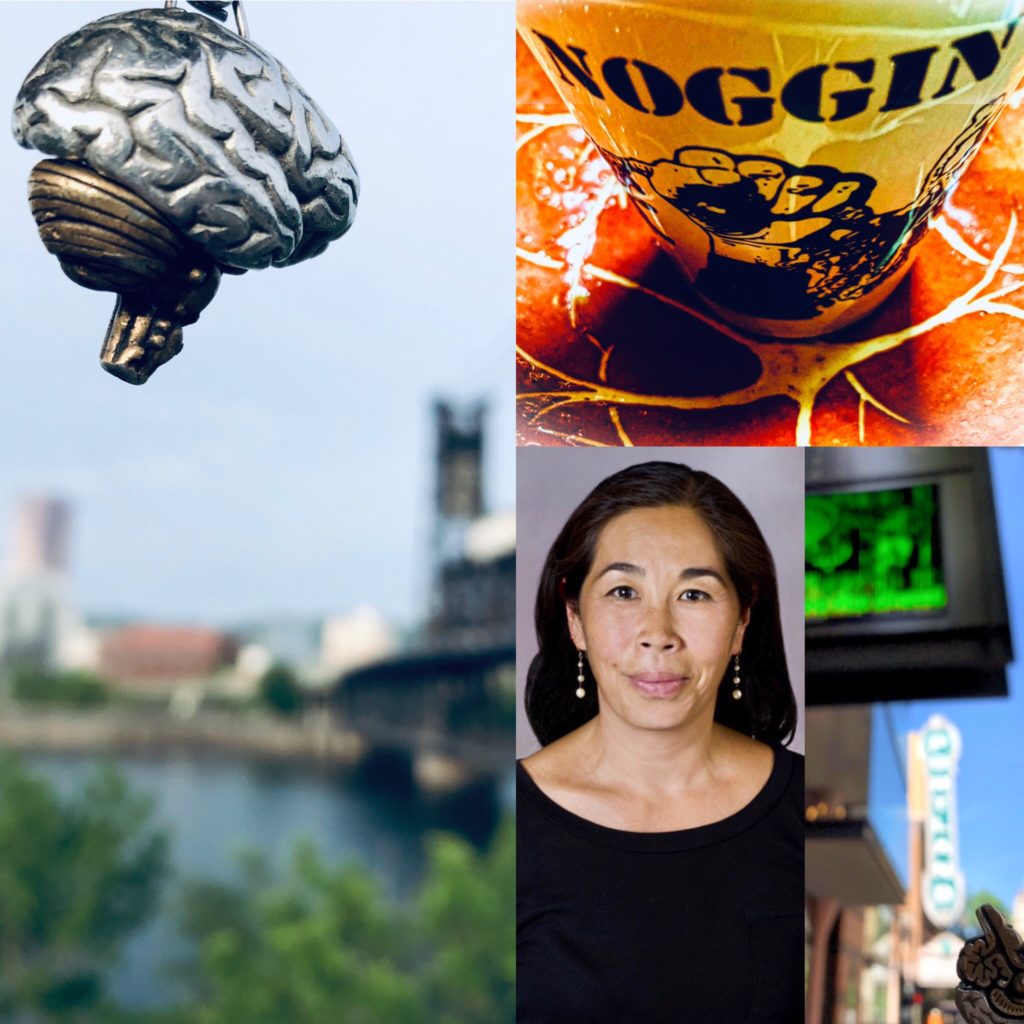
Once again thanks to the generosity of the OHSU Brain Institute (OBI), NW Noggin brought 37 (!!!) informed outreach volunteers from Portland State University and other collaborators to the downtown Newmark Theater, with (of course!) real (extra) brains and colorful neuro-art projects. We answered questions from audience members curious about yet another intriguing talk on this year’s Brain Awareness theme of “mind altering medicine…”
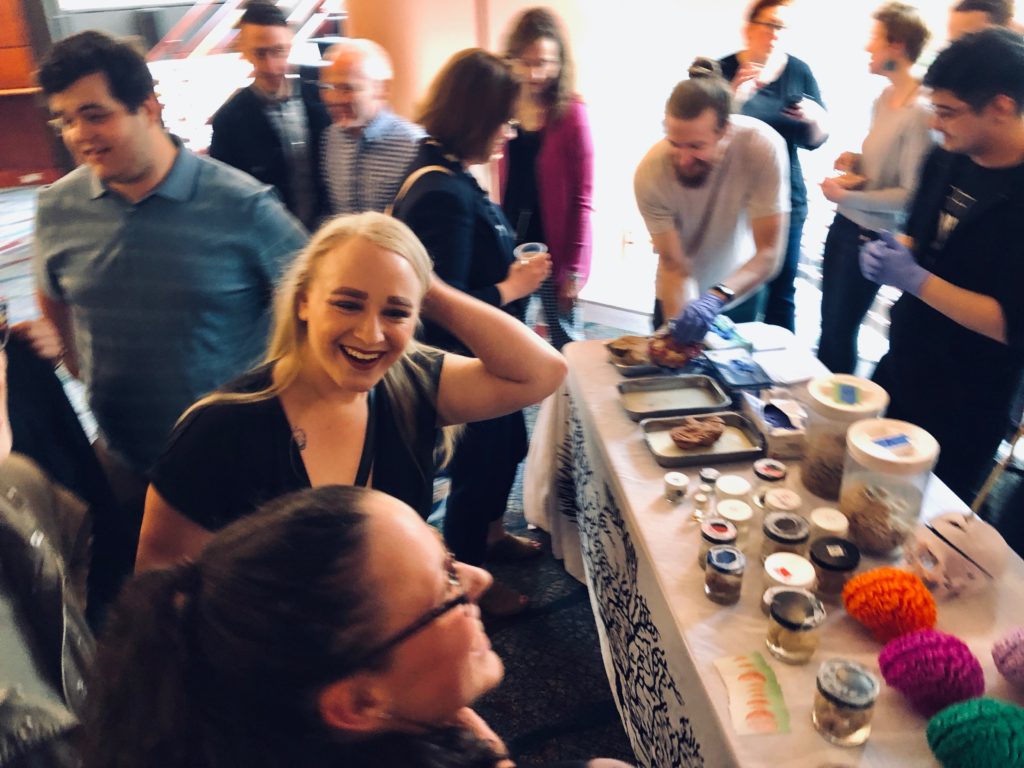
SEE VOLUNTEER LIST: Noggin @ OHSU Brain Awareness lecture: Lynne Shinto
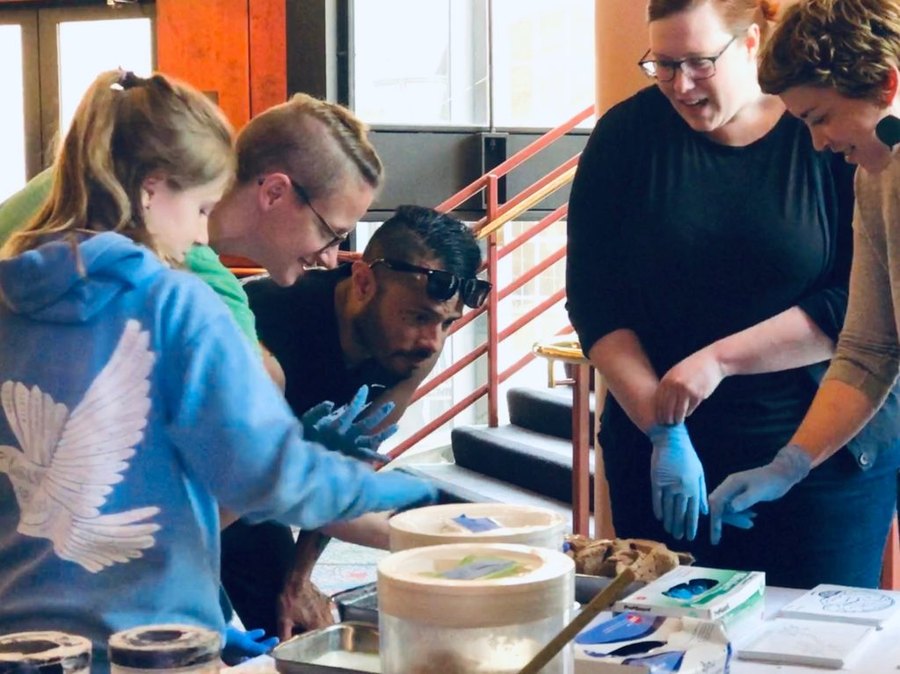
LEARN MORE: OBI Brain Awareness Lectures
We came to hear Dr. Lynne Shinto, N.D., M.P.H, a naturopathic provider at OHSU’s Center for Women’s Health, and a Professor in the Departments of Neurology and Obstetrics and Gynecology discuss her research concerning the effects of mindfulness and other lifestyle changes on youth experiencing psychosis…
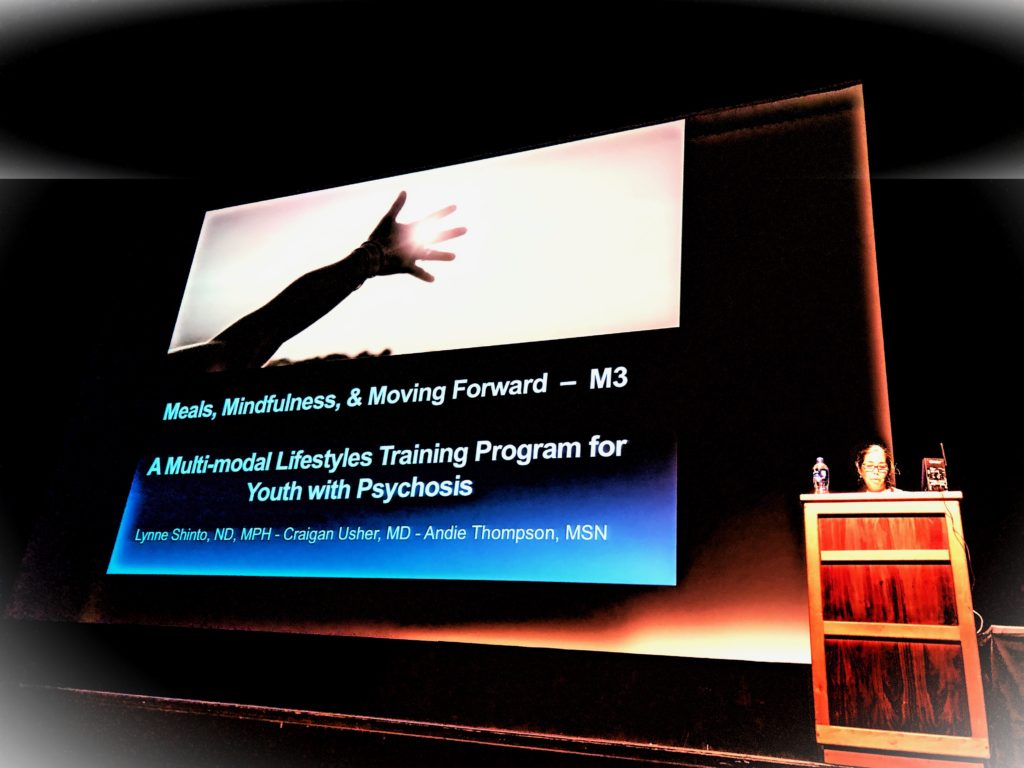
Dr. Shinto began with a short om meditation exercise…
…which was relaxing…
LEARN MORE: Neurohemodynamic correlates of ‘OM’ chanting
LEARN MORE: EEG Spectral Analysis on OM Mantra Meditation
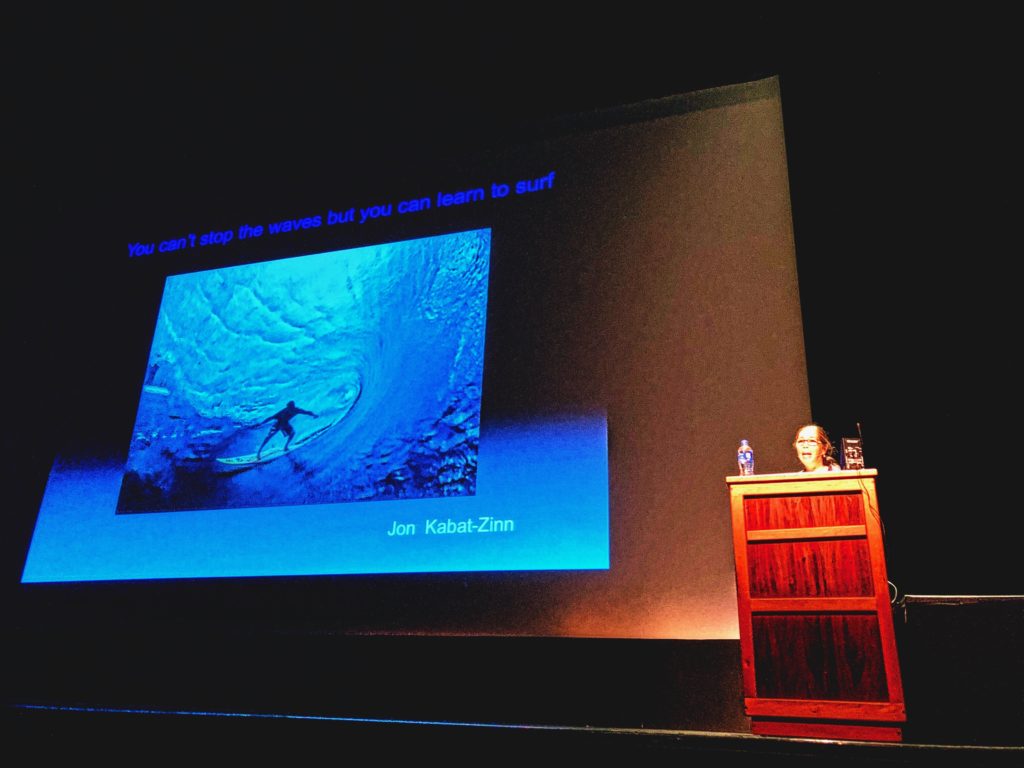
She also referenced the same optimistic quote from Jon Kabat-Zinn we’d encountered during the first Brain Awareness lecture by Dr. Katie Witkiewitz the week before: “You can’t stop the waves but you can learn to surf.”
LEARN MORE: Power to Choose: Mindfulness & Addiction
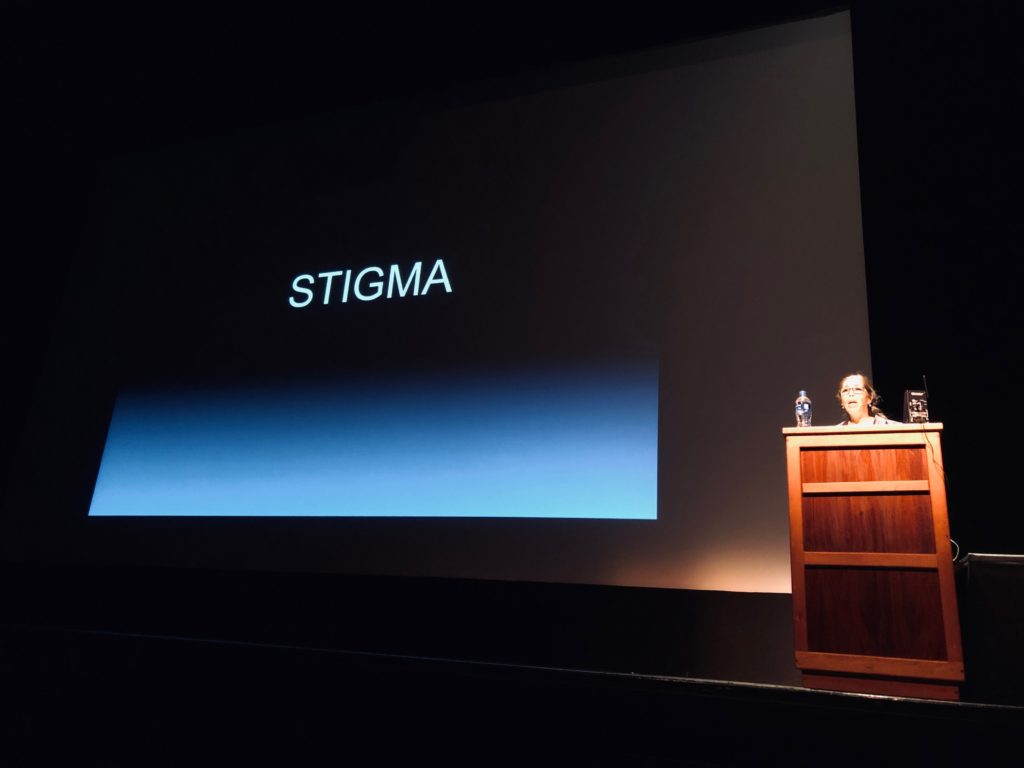
Dr. Shinto then spoke movingly about stigma, both internal (e.g., “I’m no good”) and that imposed from and exacerbated by outside sources. Stigma can impact mental health, and limits access to treatment. Many American families struggle to afford adequate health care coverage, housing, education and other basic necessities, as inequality continues to rise in the US…

LEARN MORE: Race, Bias & Brain: You Can’t Control Art
LEARN MORE: Listening to testimony @ p:ear

For many, it can be wave after wave…
LEARN MORE: Dehumanizing Metaphors Lead to Dehumanizing Policies
“Sometimes it’s hard,” said Dr. Shinto, “learning to ride those waves. We get stuck.”
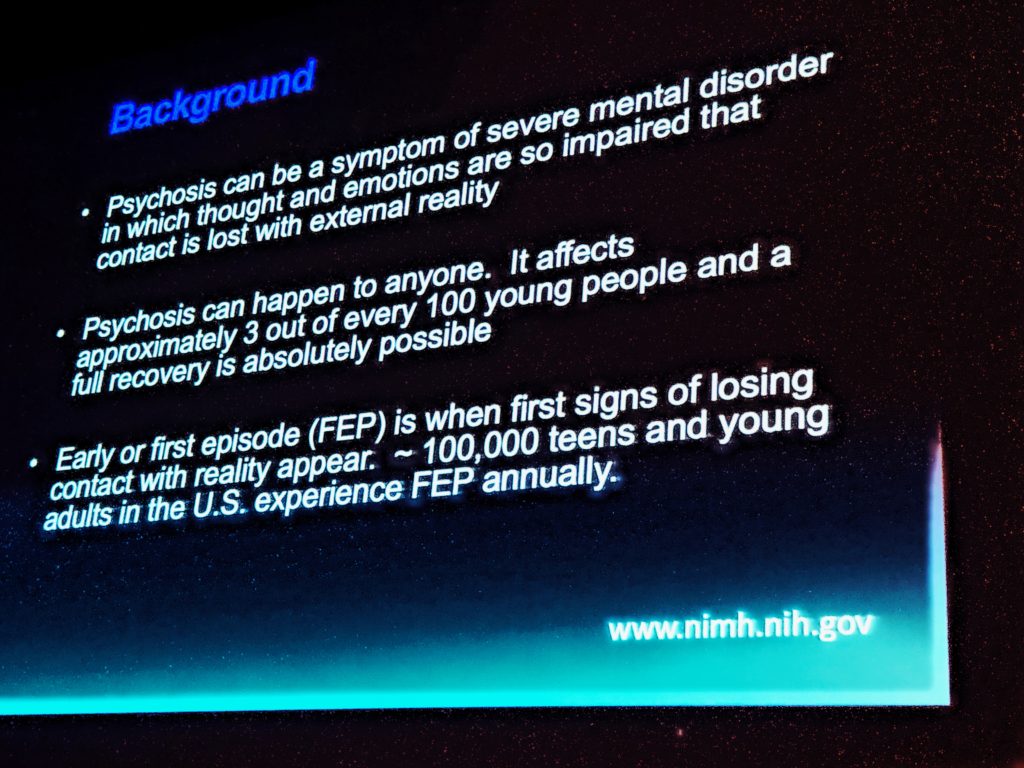
“First episode psychosis (FEP) affects three out of every 100 young people,” she told us. “There is no single cause. It can be trauma, lack of sleep, drugs, war, infection, tumors…” Psychosis, she explained, is a “severe mental disorder in which thoughts and emotions are so impaired that contact is lost with external reality.”
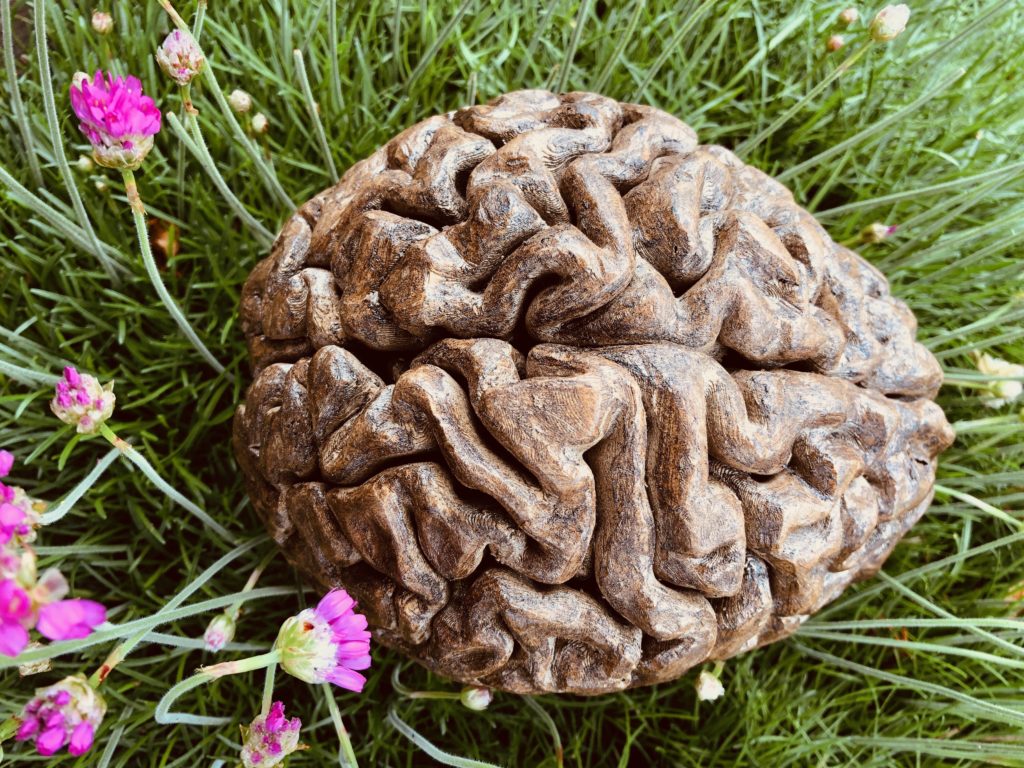
Symptoms of psychosis can be classified as ‘positive,’ meaning ‘added on,’ including the experience of hallucinations (perceptions in the absence of an actual stimulus) and delusions (fixed or falsely held beliefs)…
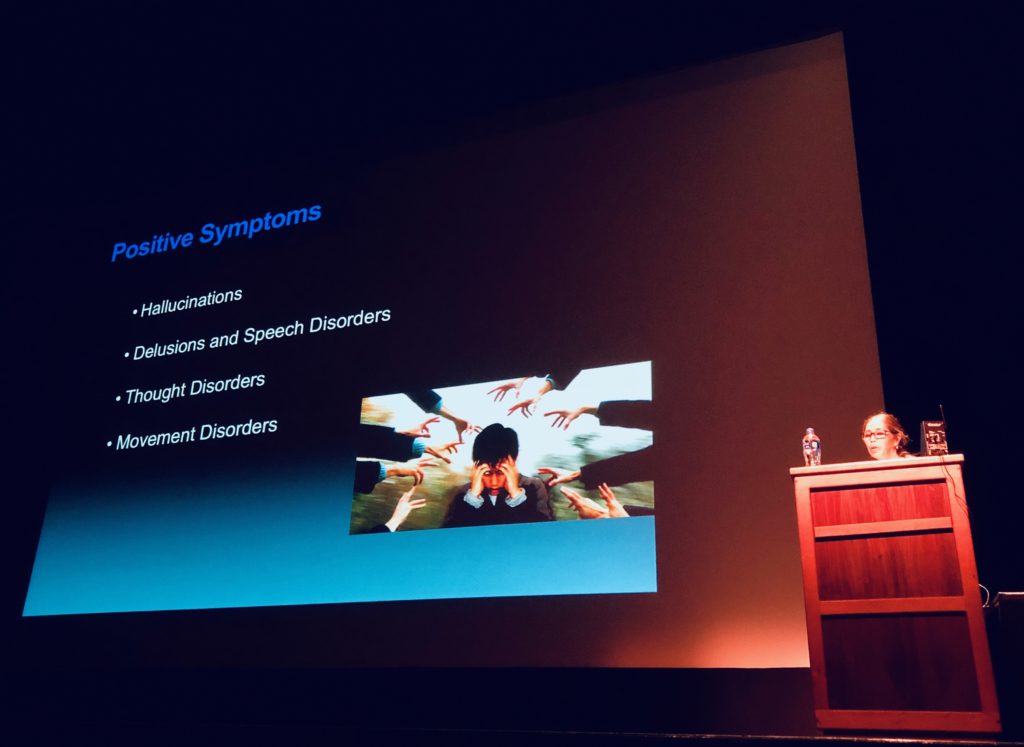
Psychotic symptoms can also be considered ‘negative’ (e.g., ‘taken away’ or diminished), including apathy, lack of drive, paucity of speech, depression, social withdrawal and self-neglect.
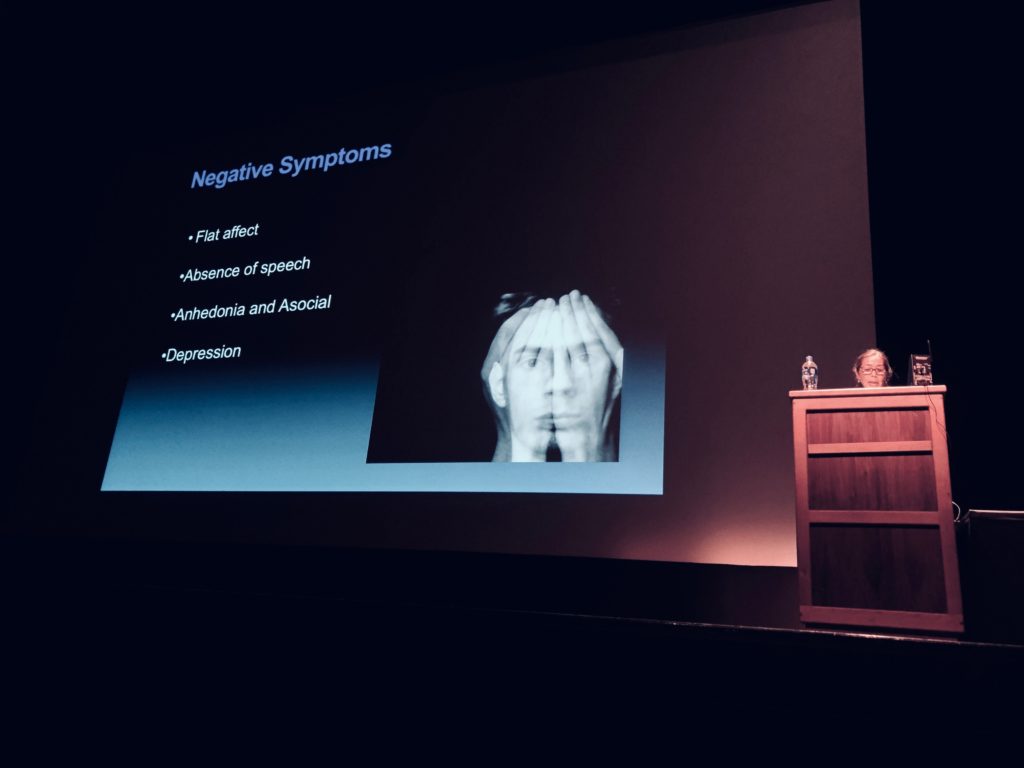
Those experiencing FEP, we learned, have a much higher risk of death – in fact, their mortality rate is 24 times higher than that of same age peers!
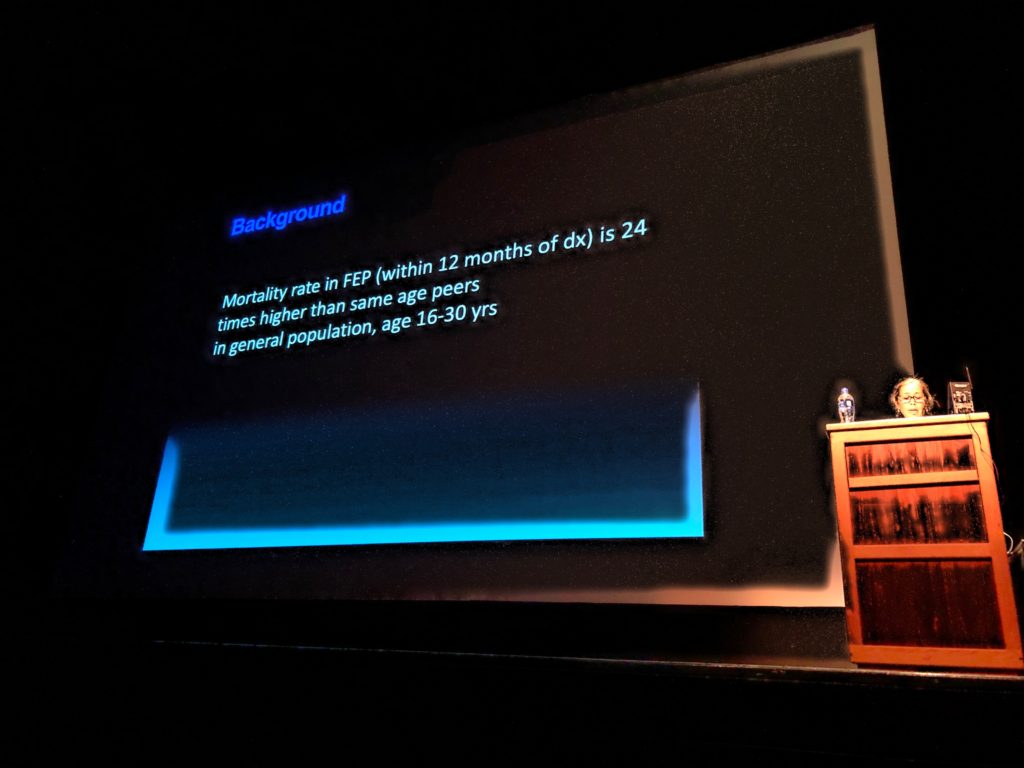
LEARN MORE: Higher Death Rate Among Youth with First Episode Psychosis
There is a tremendous need to reach these young people to offer support, since recovery is absolutely possible. But the support must be informed. Police and other first responders are often inadequately trained, and there’s an assumption common amongst the public that someone experiencing psychosis is dangerous. That is a myth.
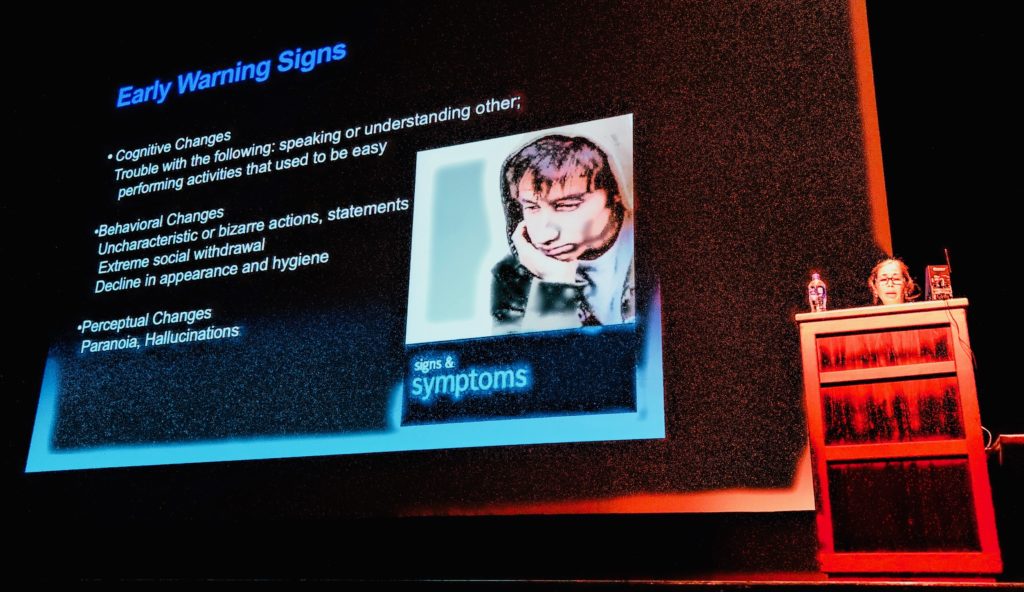
From the National Institute of Mental Health (NIMH)…“People experiencing psychosis may behave strangely, they may hear voices, or see things that don’t exist. They may be frightened and confused or withdrawn. However, it is more likely these people will harm themselves than someone else. It is important to help a person with psychotic symptoms get treatment as quickly as possible.”
LEARN MORE: Fact Sheet: First Episode Psychosis
LEARN MORE: What is Psychosis?
LEARN MORE: Improving police interventions during mental health-related encounters
LEARN MORE: How to Improve Interactions between Police and the Mentally Ill
Drugs used to treat psychosis typically antagonize (or block) receptors for the neurotransmitter dopamine, which can help to reduce the ‘positive’ symptoms.
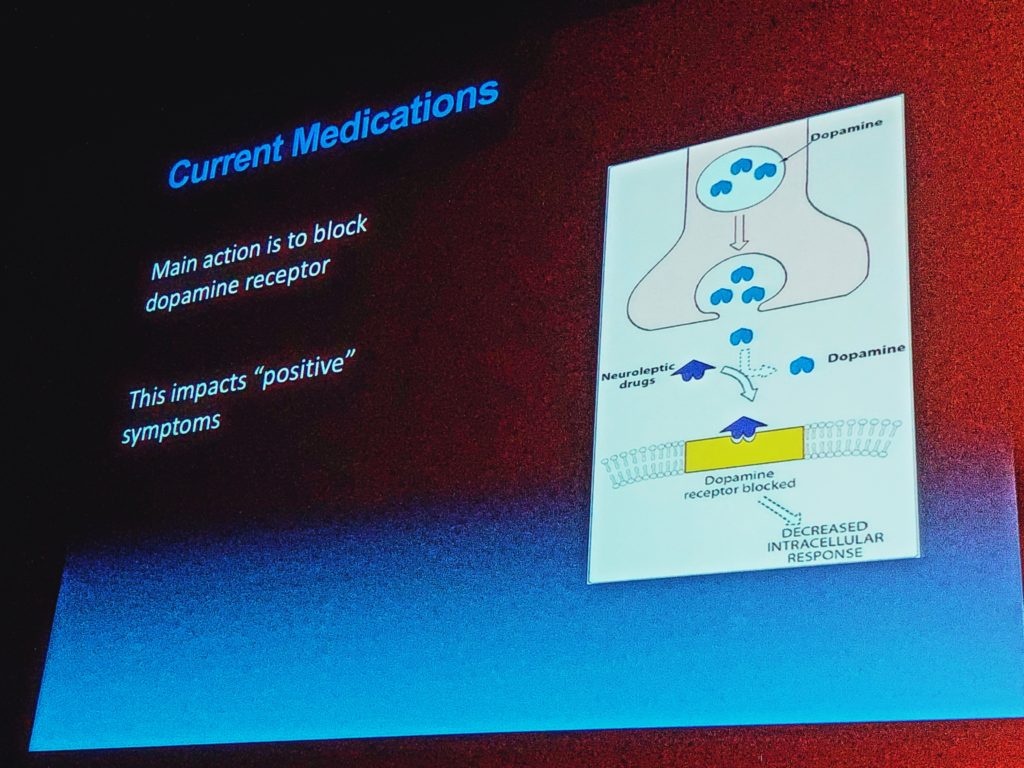
However these medications also have significant side effects, including weight gain (increased body mass index, or BMI), increased LDL cholesterol, and other threats to cardiometabolic health.
LEARN MORE: Cardiometabolic Risk of Second-Generation Antipsychotics During First-Time Use in Children and Adolescents
LEARN MORE: Management of Medication-Related Cardiometabolic Risk in Patients with Severe Mental Illness
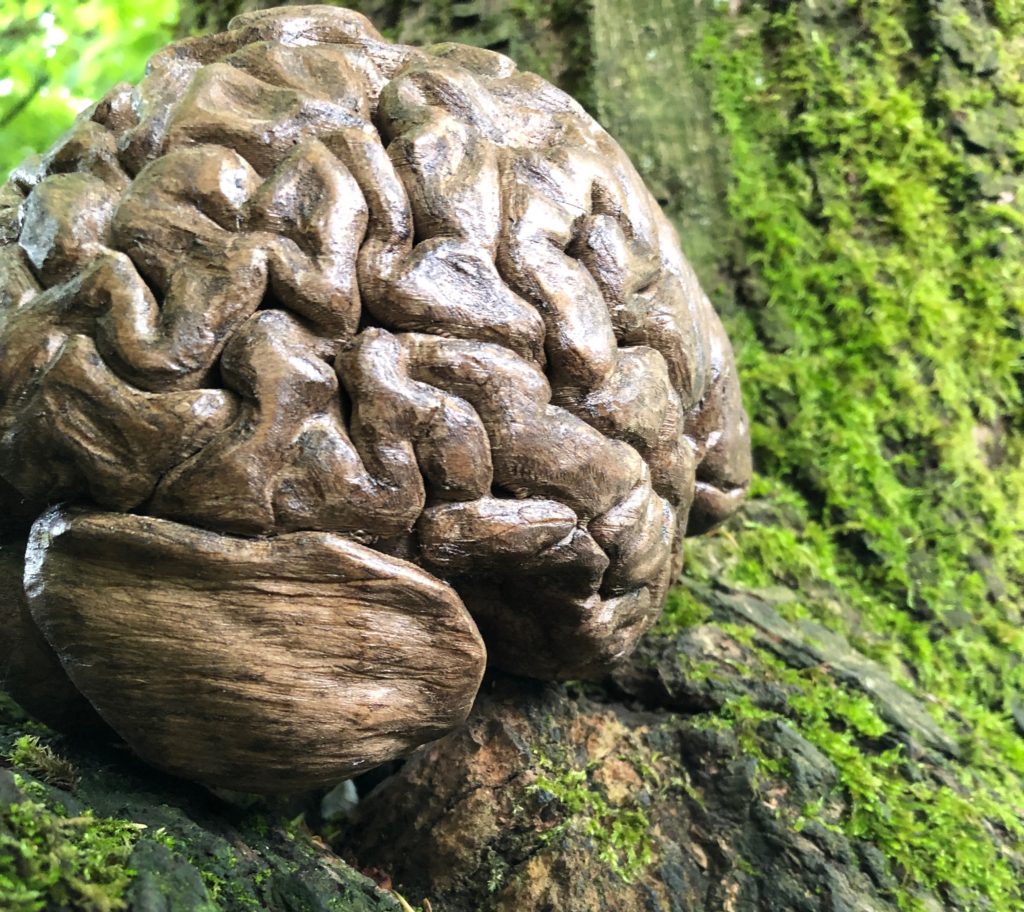
Dr. Shinto partnered with the Early Assessment & Support Alliance (EASA), and their Young Adult Leadership Council (YALC), a group of young people facing mental health challenges, whose insights help inform and shape EASA initiatives and services…

“Psychosis is my biggest struggle, the biggest journey I ever had…” – Nick (EASA)
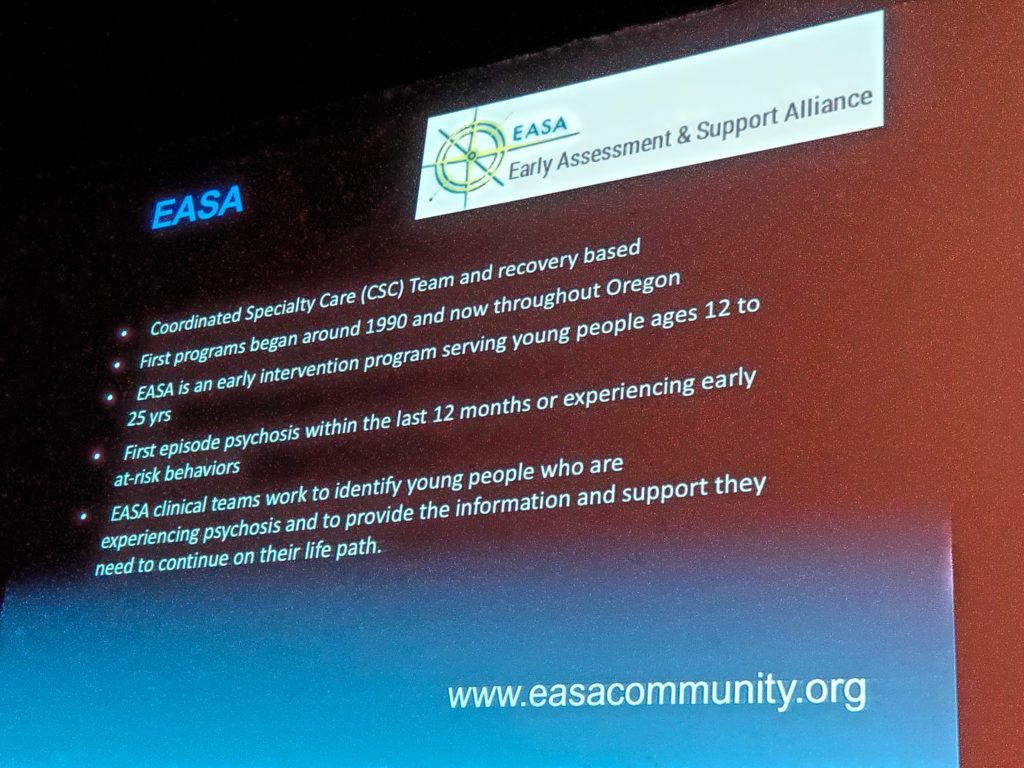
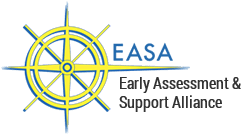
LEARN MORE: About EASA
EASA is an innovative statewide network of programs sponsored by the Oregon Health Authority that often integrates the arts into their campaigns to educate and de-stigmatize psychosis and treatment for mental health. For example, EASA participants Ryan Melton, Tamara Sale, Katie Hayden-Lewis, and Craigan Usher developed this comic about the neuroscience of psychosis along with a Portland-based artist, Colleen Coover…
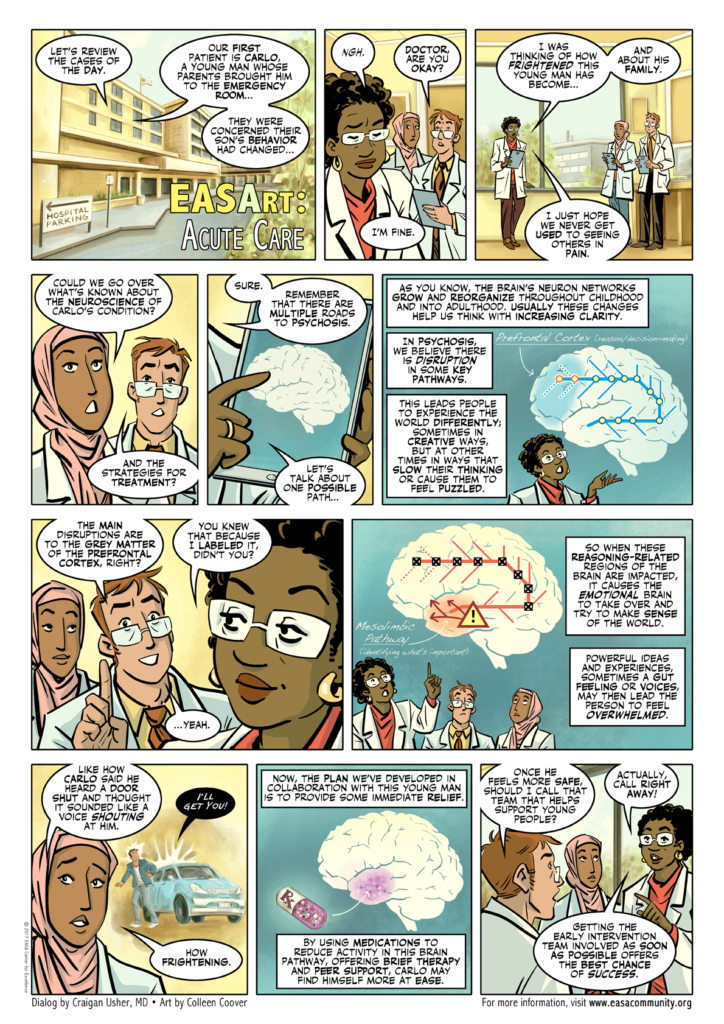
LEARN MORE: EASAart
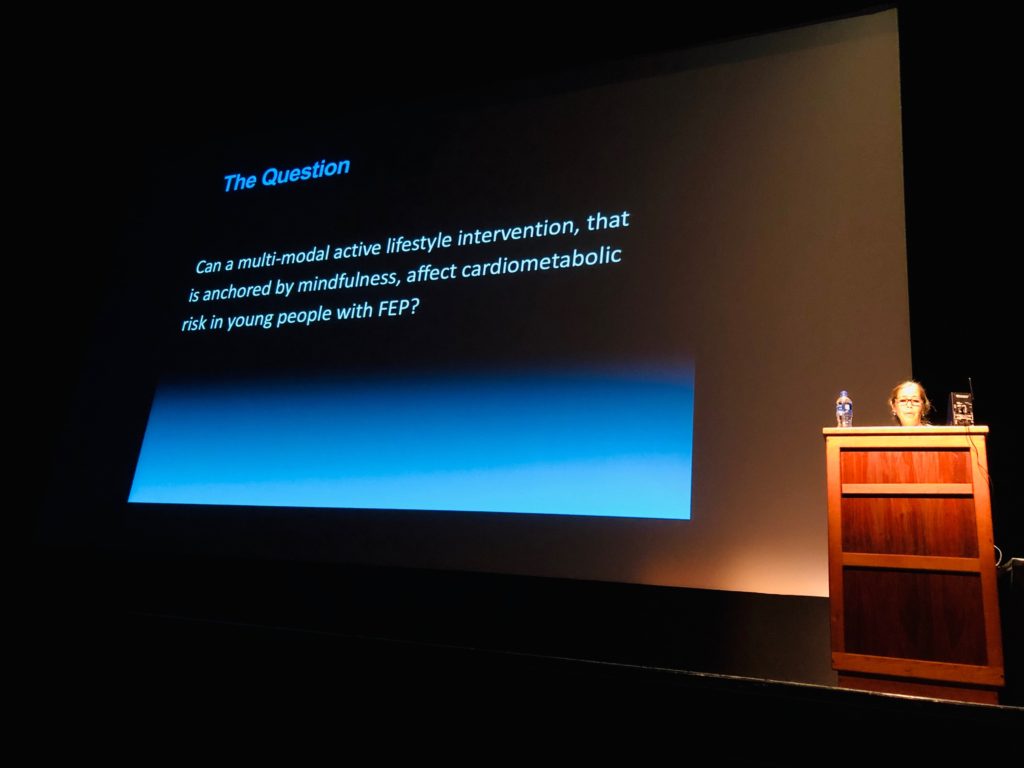
“The question,” said Dr. Shinto, “is can a multi-modal active lifestyle intervention, that is anchored by mindfulness, affect cardiometabolic risk in young people with FEP?” Along with EASA, they created the M3 study to explore the potential therapeutic effects of specific lifestyle changes, including cooking meals and mindfulness training, on measures of mental and physical health…
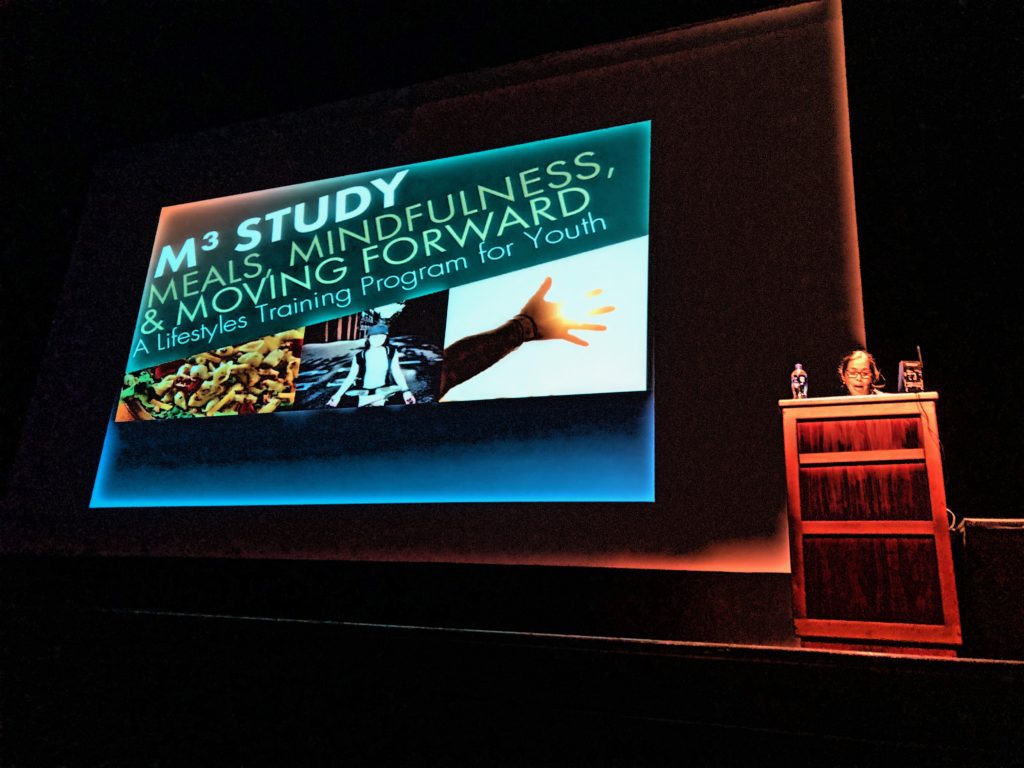
“The M3 program is an activity-based 6 week lifestyle training program created to see if…nutrition education, physical exercise, and mindfulness practice helps youth in the Early Assessment and Support Alliance (EASA) enjoy a healthier lifestyle.”
LEARN MORE: M3 Study: Meals, Mindfulness & Moving Forward
Dr. Shinto described how she asked the EASA youth what they wanted to try for M3. “No lecturing. Mindfulness. Yoga. Cooking meals. Listening. The community didn’t want ‘experts’ telling them what to do.”
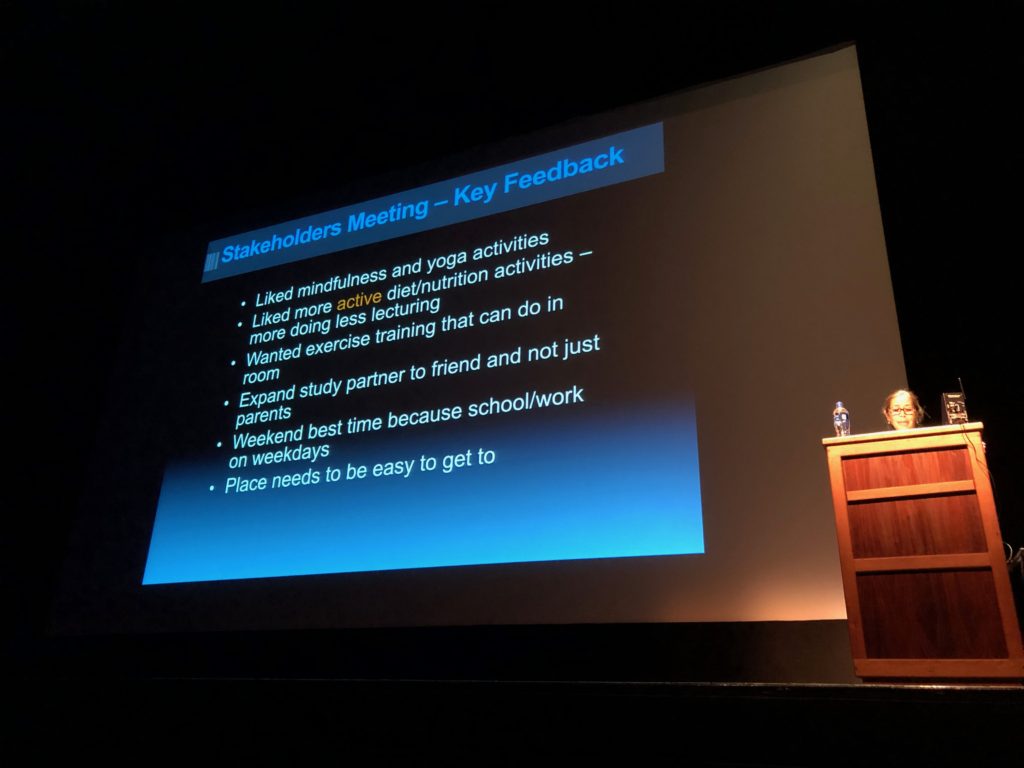
Yes, yes and yes!
Also, the youth “wanted programs at familiar EASA sites – not at OHSU.” Going places, listening, learning from others, not pathologizing or considering other people simply as ‘subjects,’ sharing stories and techniques – why we thoroughly agree!
LEARN MORE: Thankful for brains
Study participants spent six weeks practicing mindfulness, yoga (through Street Yoga), jiu jitsu (through River City Warriors), taking walks, listening to taiko drumming (through En Taiko), learning about nutrition and “smart” food shopping, and collaboratively cooking healthy meals…

Arielle Clark from The Portland Kitchen taught cooking skills to M3 participants…
So what did they find?
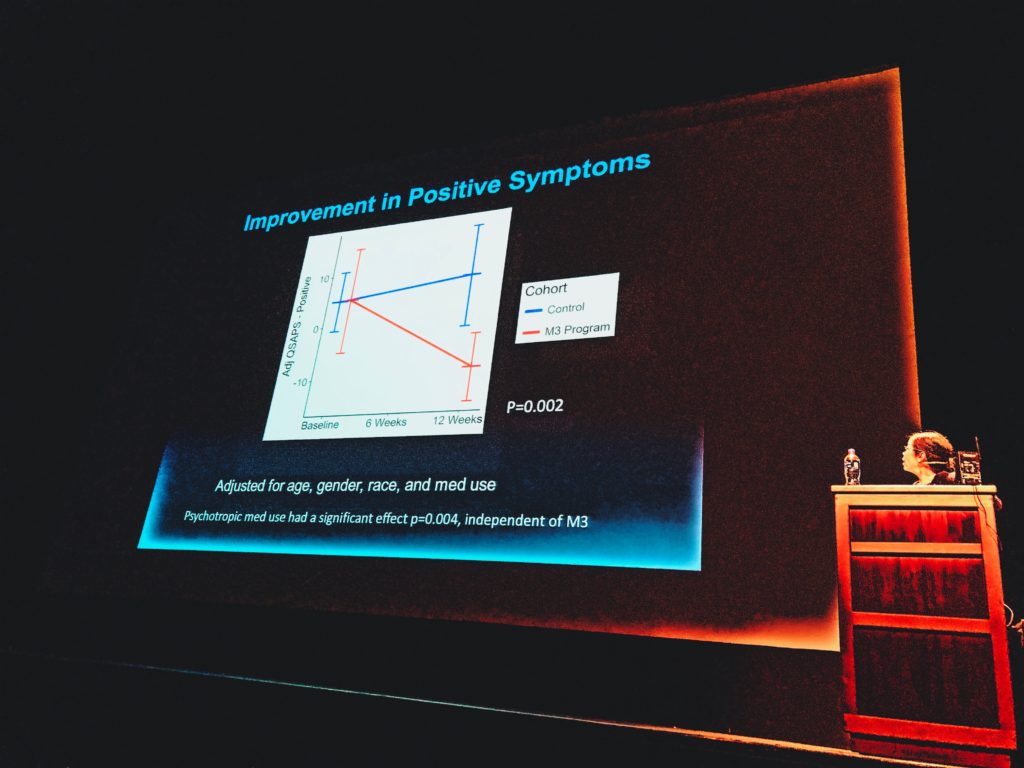
There was no change in the negative symptoms of psychosis, but a significant improvement in positive symptoms. There was also a trend towards slowing of the increase in body mass index (BMI) typically seen with drug treatment…
LEARN MORE: M3 Study: Meals, Mindfulness & Moving Forward
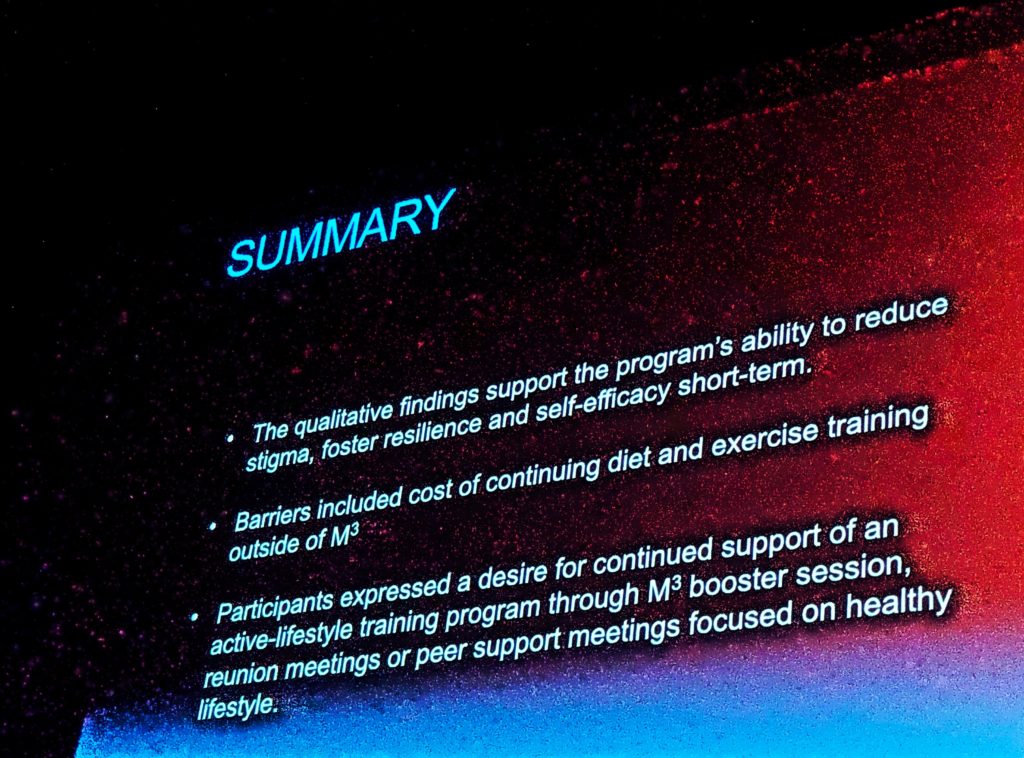
However, Dr. Shinto, noted, the most important impact of their efforts appeared to be “just allowing kids to be kids without the stigma of illness.”

She read us several illustrative quotes from youth participants in their M3 program…
“…’yeaa I’m socializing’ and ‘yeah I’m doing stuff on my own without like, clinging to my mom’ and I am doing better. And these people aren’t judging me about my mental illness too, so that’s a bonus!”
“I’d have to say that my favorite part of the study was either the exercise or that hands-on cooking lesson because what we made was really delicious. I just thought that it was neat to do something like super hands on, like you were actually doing it. Like it felt fun, that’s what made part of this fun is not just like having to listen to someone while they cook, but actually cooking yourself.”
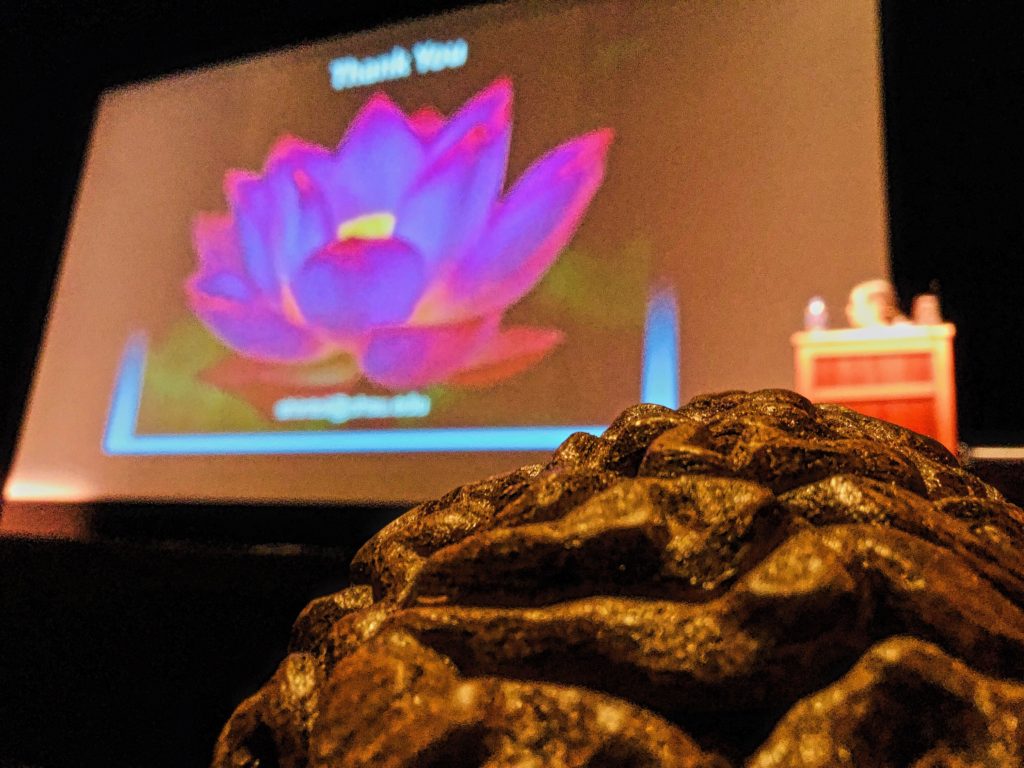
After the talk we returned to the Newmark lobby to discuss brains, drugs and psychosis further with curious audience members…
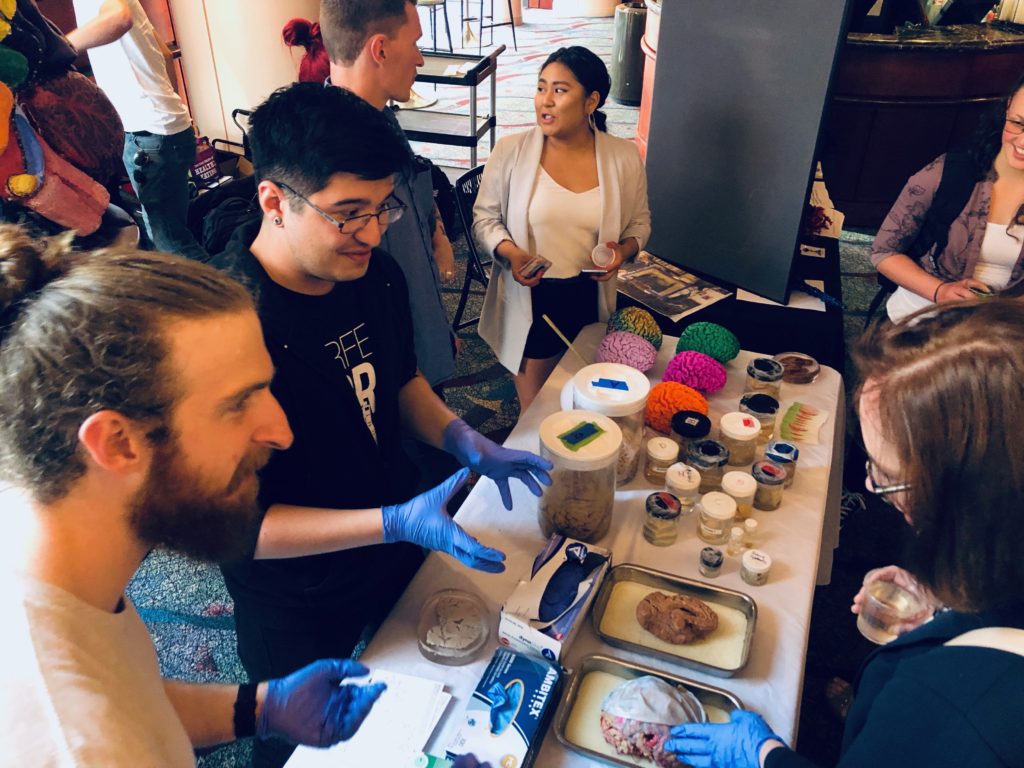
And many, many thanks to Kate Stout at the OHSU Brain Institute for welcoming so many of our NW Noggin volunteers!


